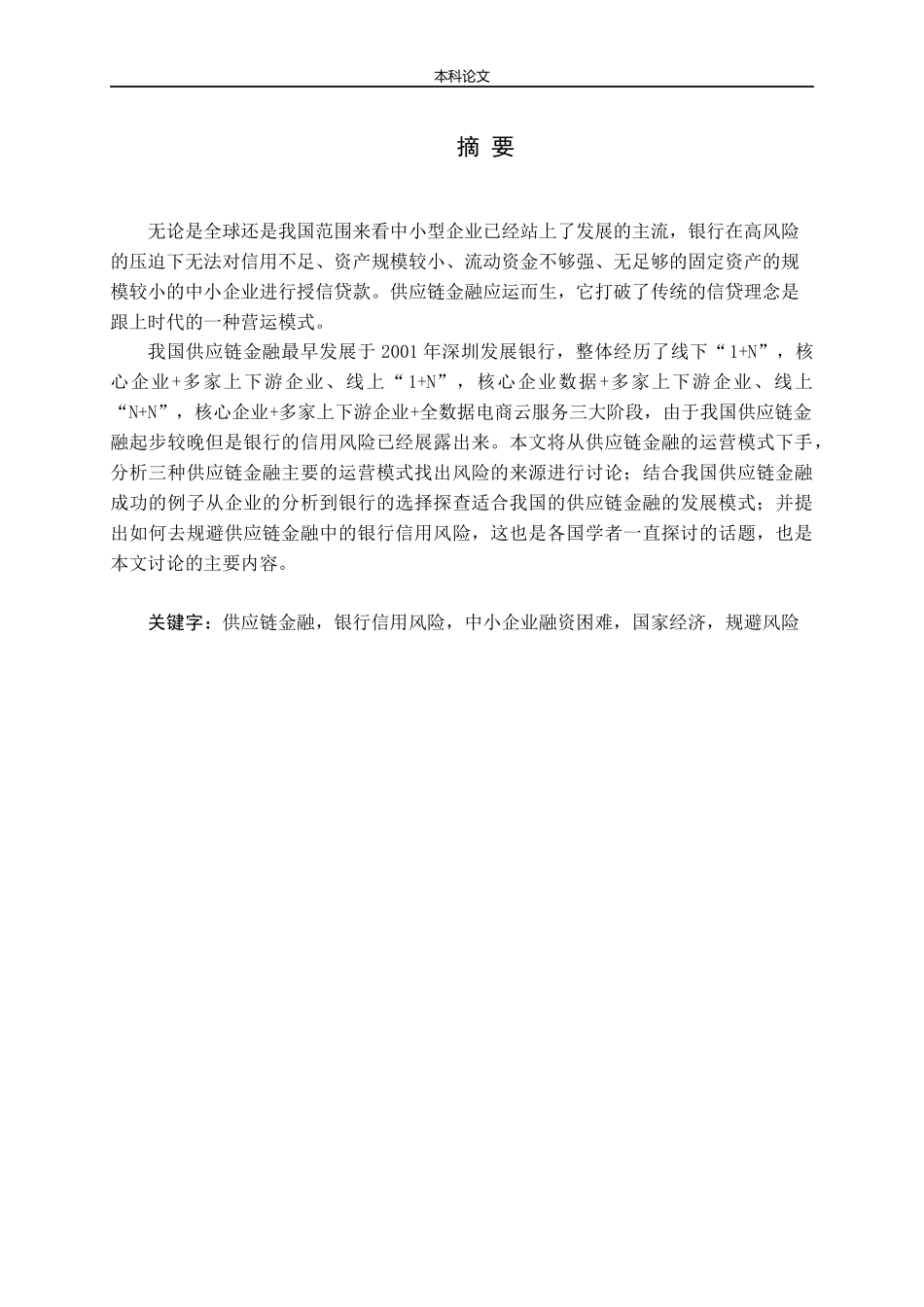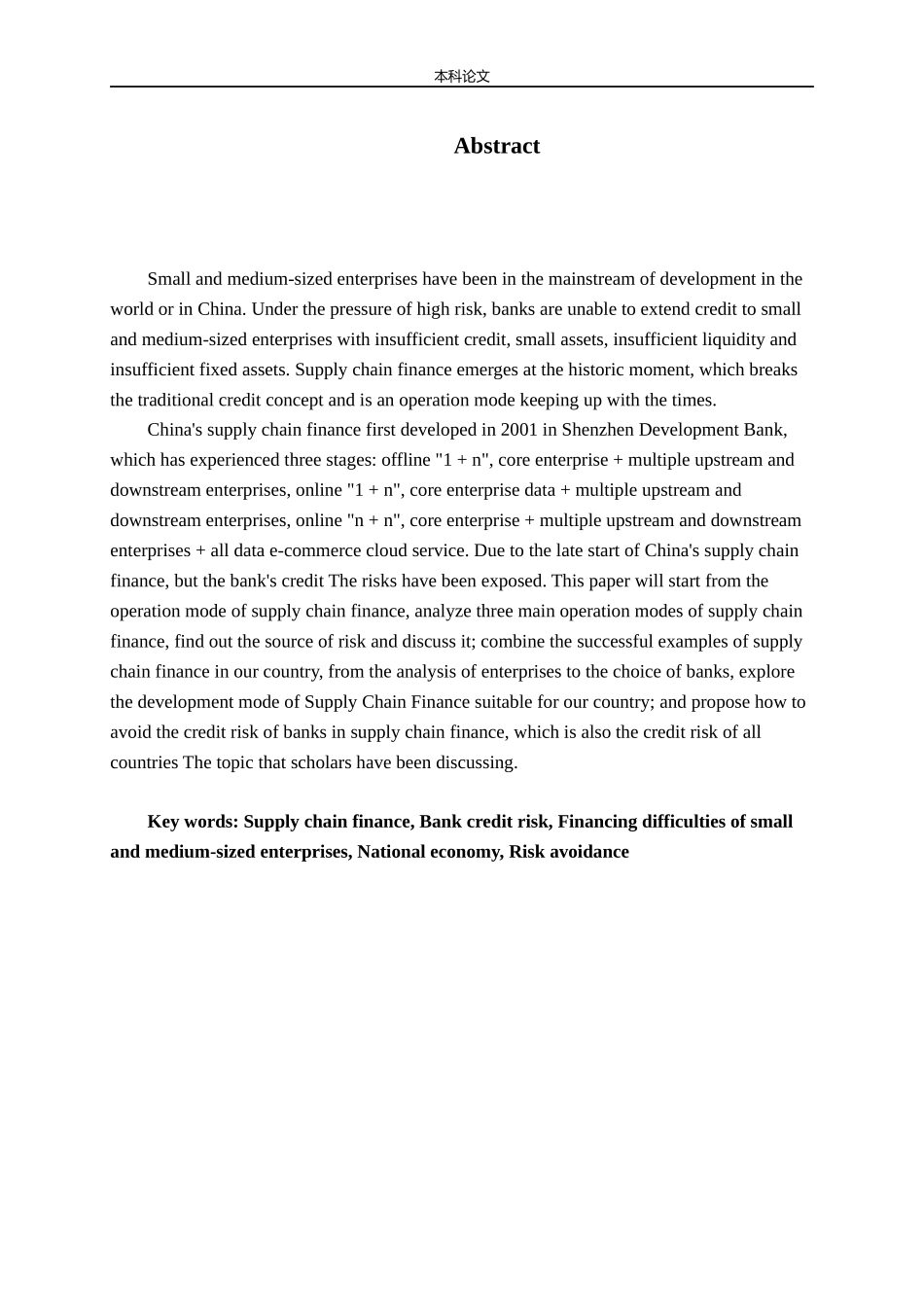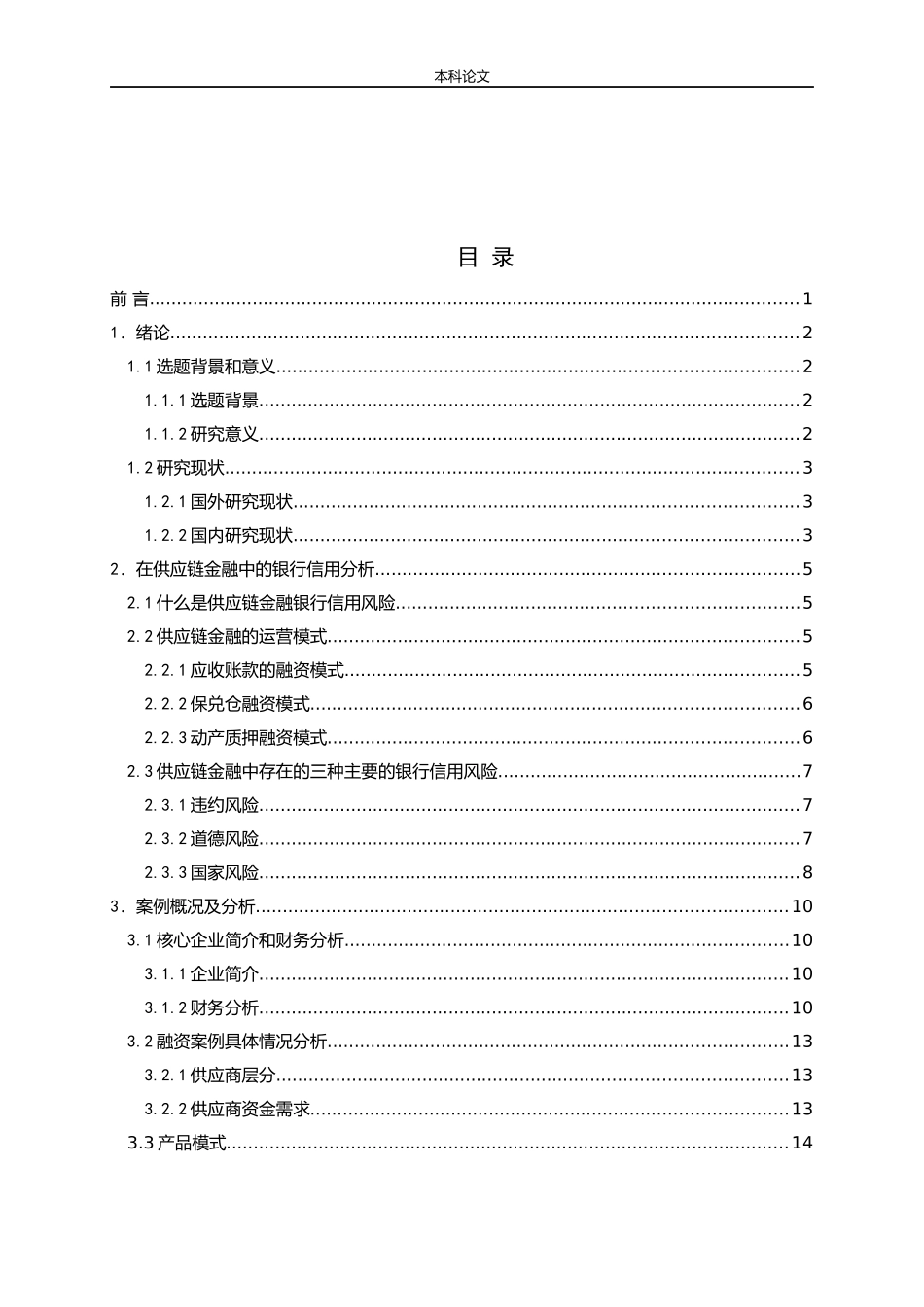本科论文摘 要无论是全球还是我国范围来看中小型企业已经站上了发展的主流,银行在高风险的压迫下无法对信用不足、资产规模较小、流动资金不够强、无足够的固定资产的规模较小的中小企业进行授信贷款。供应链金融应运而生,它打破了传统的信贷理念是跟上时代的一种营运模式。我国供应链金融最早发展于 2001 年深圳发展银行,整体经历了线下“1+N”,核心企业+多家上下游企业、线上“1+N”,核心企业数据+多家上下游企业、线上“N+N”,核心企业+多家上下游企业+全数据电商云服务三大阶段,由于我国供应链金融起步较晚但是银行的信用风险已经展露出来。本文将从供应链金融的运营模式下手,分析三种供应链金融主要的运营模式找出风险的来源进行讨论;结合我国供应链金融成功的例子从企业的分析到银行的选择探查适合我国的供应链金融的发展模式;并提出如何去规避供应链金融中的银行信用风险,这也是各国学者一直探讨的话题,也是本文讨论的主要内容。关键字:供应链金融,银行信用风险,中小企业融资困难,国家经济,规避风险本科论文AbstractSmall and medium-sized enterprises have been in the mainstream of development in the world or in China. Under the pressure of high risk, banks are unable to extend credit to small and medium-sized enterprises with insufficient credit, small assets, insufficient liquidity and insufficient fixed assets. Supply chain finance emerges at the historic moment, which breaks the traditional credit concept and is an operation mode keeping up with the times.China's supply chain finance first developed in 2001 in Shenzhen Development Bank, which has experienced three stages: offline "1 + n", core enterprise + multiple upstream and downstream enterprises, online "1 + n", core enterprise data + multiple upstream and downstream enterprises, online "n + n", core enterprise + multiple upstream and downstream enterprises + all data e-commerce cloud service. Due to the late start of China's supply chain finance, but the bank's credit The risks have been exposed. This paper wi...


